Most of us plant annuals in the veggie garden, those edibles that thrive in summer and die when the temps turn cold. Some of us want a vegetable to return season after season…here are three to consider.
Of course all of these foods are available in grocery stores, specialty markets and farmers markets if you don’t want to grow your own. Recipes provided for your eating pleasure.
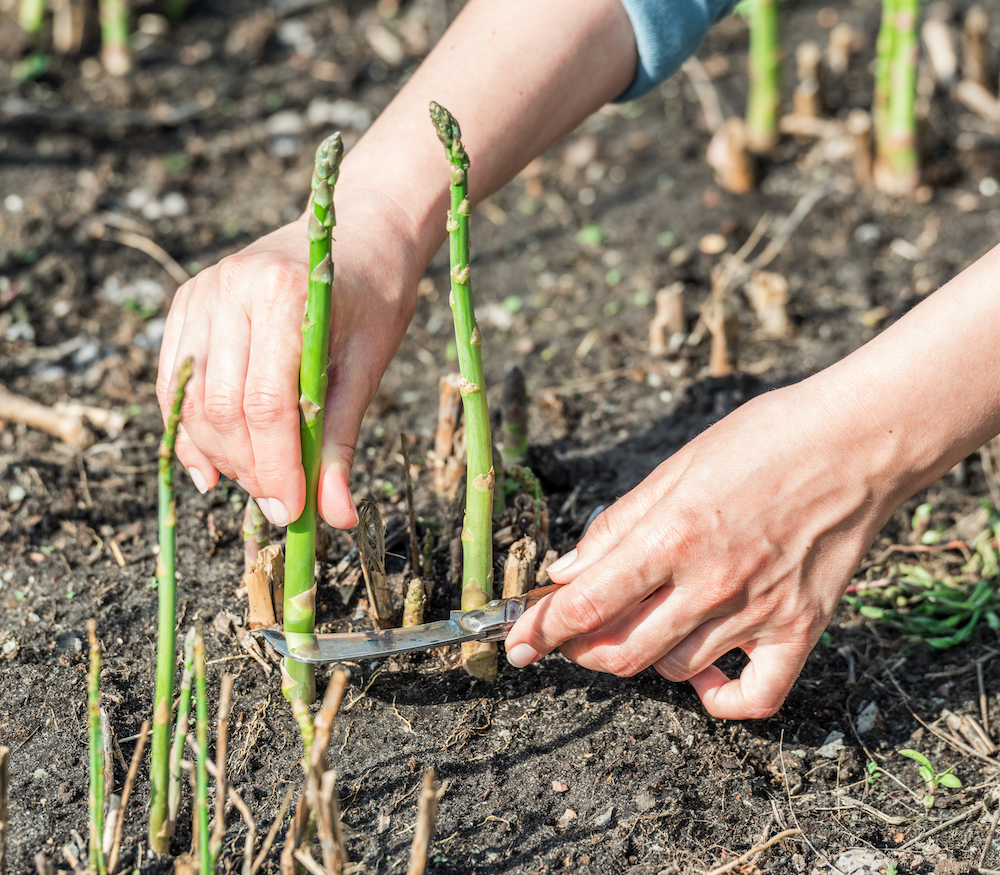
Asparagus
An absolute spring favorite, this one takes a little patience. Like some perennials that don’t bloom their first year, asparagus (Asparagus officinalis) requires a delayed harvest for a few years. That’s so the plants can build up their strength and size. There’s also a difference between male and female asparagus plants. Spears from male plants tend to be fatter, while female plants produce more spears but they are slender.
Because asparagus is considered a permanent plant, it usually has its own space. Create a section in a sunny place in your garden just for asparagus. Look for year-old, bare-root plants in garden centers and online retailers in early spring.
Popular varieties have Jersey in their name, such a Jersey Giant, Jersey Knight and Jersey Supreme. These plants are bred to be productive and to be more resistant to asparagus diseases, such as crown rot.
Asparagus forms a tight mat on the ground as it matures, and herein lies a problem with this plant. It’s difficult to weed that tight mat, so stay on top of any undesirable plants that might fly into the asparagus bed.
For more details on asparagus in the home garden, download pamphlet from the University of Illinois Extension, which provides growing information and recommended varieties.
Roasted asparagus with balsamic vinegar
- 2 pounds fresh asparagus, trimmed
- 2 tablespoons olive oil
- ½ pinch ground sea salt
- ⅛ teaspoon ground black pepper
- 3 tablespoons balsamic vinegar
Preheat oven to 400 degrees F. Place asparagus in shallow 9×13-inch baking dish. Sprinkle with oil, salt, and pepper; toss to coat. Bake in preheated oven until lightly browned, about 15 to 20 minutes. Drizzle with vinegar just before serving. For even more flavor, consider a balsamic vinegar reduction. Adapted from Allrecipes.com
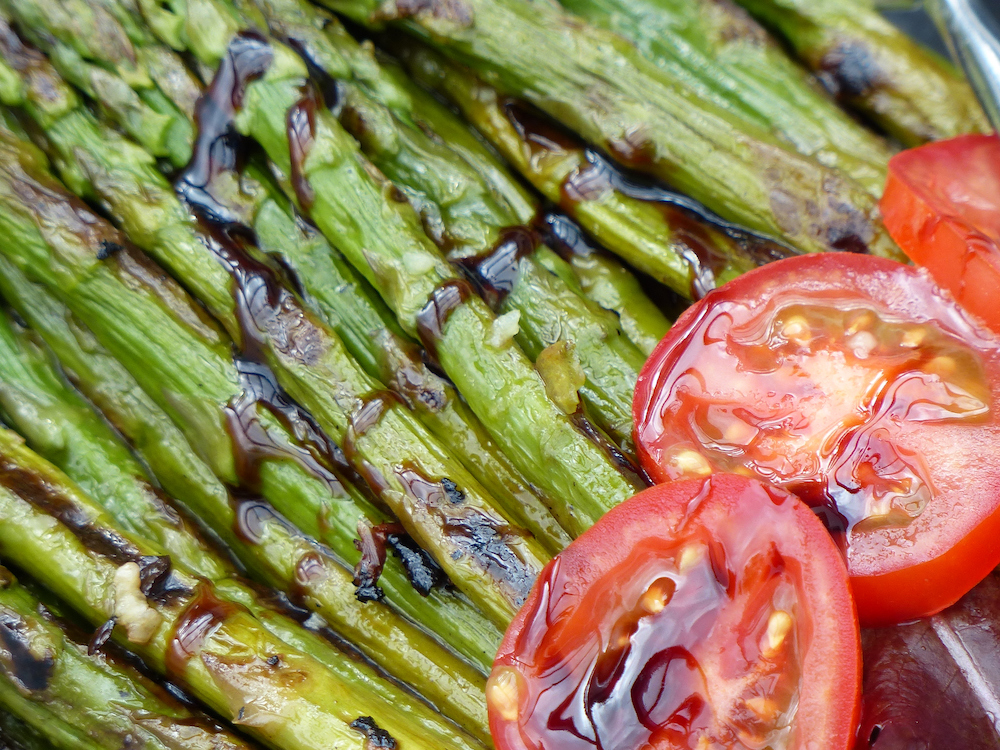
Sunchoke
Sometimes called Jerusalem artichoke, sunchoke native Indiana member of the sunflower family has no connection to the Middle Eastern country. And it is not related to artichoke (Cynara cardunculus var. scolymus), which can be grown from seed as an annual here.
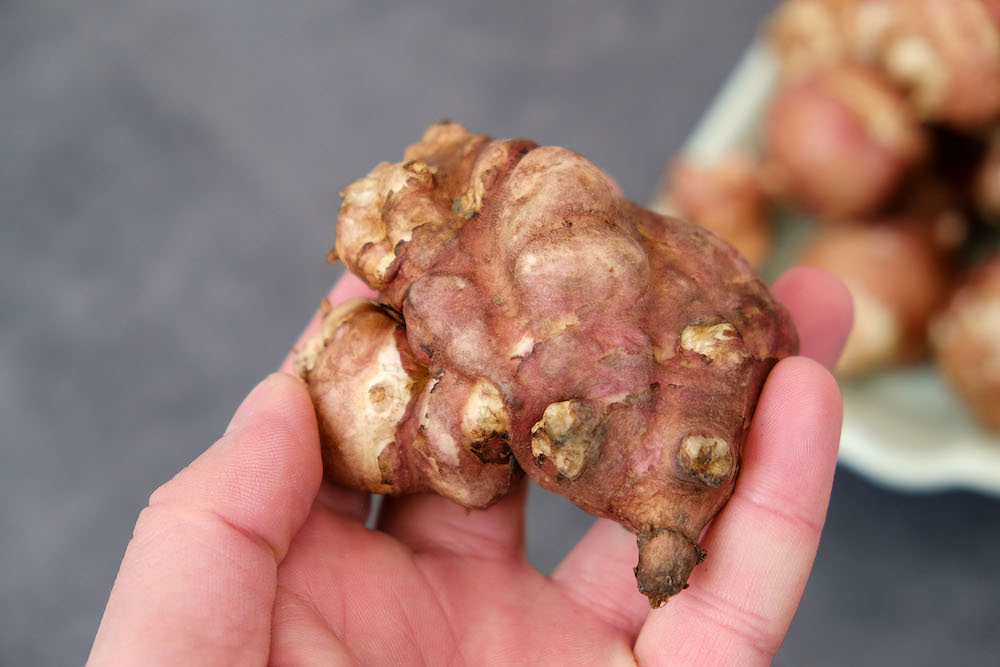
Sunchoke (Helianthus tuberosus) is considered a gourmet veggie and is hardy throughout Indiana. The tubers are grown for human food, animal forage and the production of alcohol and fructose. The flowers look like sunflowers.
A root crop planted from a tuber or seed, sunchoke has the consistency of a potato, but is not as fluffy, said Ellen Zachos, The Backyard Forager. Sunchoke frequently is prepared like potatoes. Some say it tastes a bit like an artichoke. It’s harvested in late summer and fall.
“Many Jerusalem artichoke recipes combine the tuber with potatoes,” said Ellen, author of Backyard Foraging: 65 Familiar Plants You Didn’t Know Your Could Eat (Story Publishing). “I can’t imagine why, unless the authors think you can’t handle the flavor of a new food. I have faith in you.”
Ellen offers the recipe below for sunchoke puree. “And I want you to experience the pure flavor of sunchoke, so you can really get to know it. This purée is the perfect way to do just that.”
Give sunchoke a lot of sun and its own space. One plant may reach 12 feet tall, so grow it where it is protected from winds. And it is an aggressive self-sower, making it a noxious weed in the ag world, so plan on controlling it in your garden.
n the wild, look for plants in along streams and other moist areas, edges of forests, or old farm fields. They also grow along roadsides and railroads. Here’s more info from Illinois Wildflowers.
Sunchoke puree
- 6 cups of sunchokes, washed and chopped into 1-2 inch pieces (no need to peel)
- 1 onion, roughly chopped
- Olive oil
- 2 tablespoons butter
- 1/2 cup Greek yogurt
- Salt and pepper to taste
Boil the sunchokes until you can pierce them easily with a fork. This should take 15 to 25 minutes, depending on how small you chop them. While the sunchokes are boiling, sauté your onion over medium heat in olive oil, until lightly caramelized.
Transfer the onion and sunchokes to the bowl of a food processor and purée. Add the butter, yogurt, salt, and pepper, and purée some more. Start with two teaspoons of salt and one teaspoon of pepper, and adjust according to taste.
That’s it. Ridiculously easy, right? Sunchoke purée has a tan/brown color as a result of leaving the skins on. If you’re one of those people who doesn’t like brown food, snip a few scallions and sprinkle them on top of your purée to pretty it up. But honestly, this dish doesn’t need decoration. It’s great as it is: simple and delicious. Serve it hot. Leftovers re-heat like a dream.
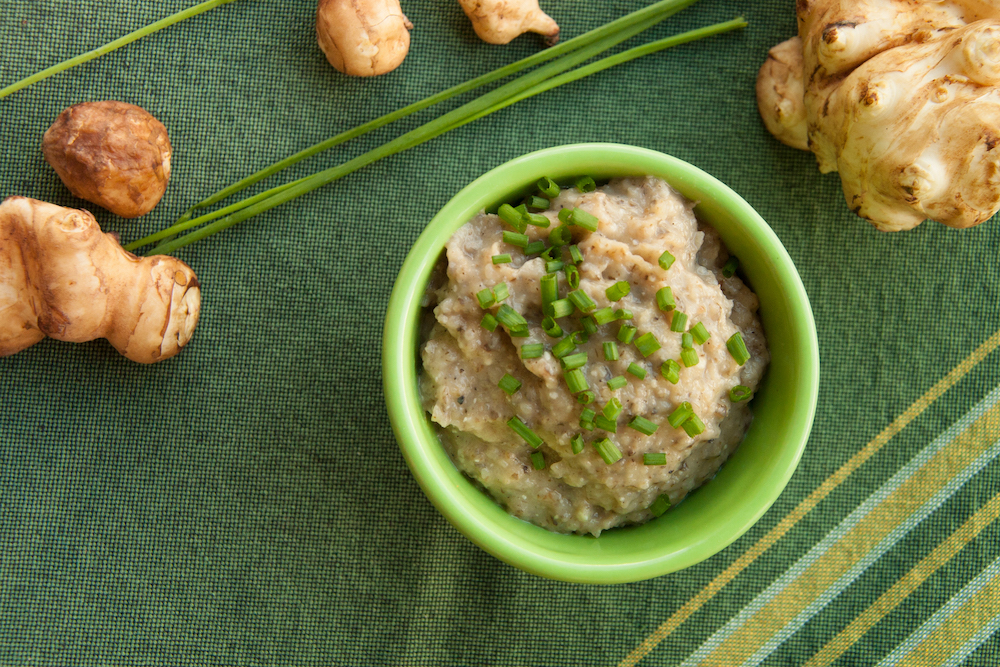
Rhubarb
Although most of us use rhubarb as a fruit, it technically is a vegetable. But that doesn’t stop us from mixing its stems with blueberries, strawberries and other fruit.
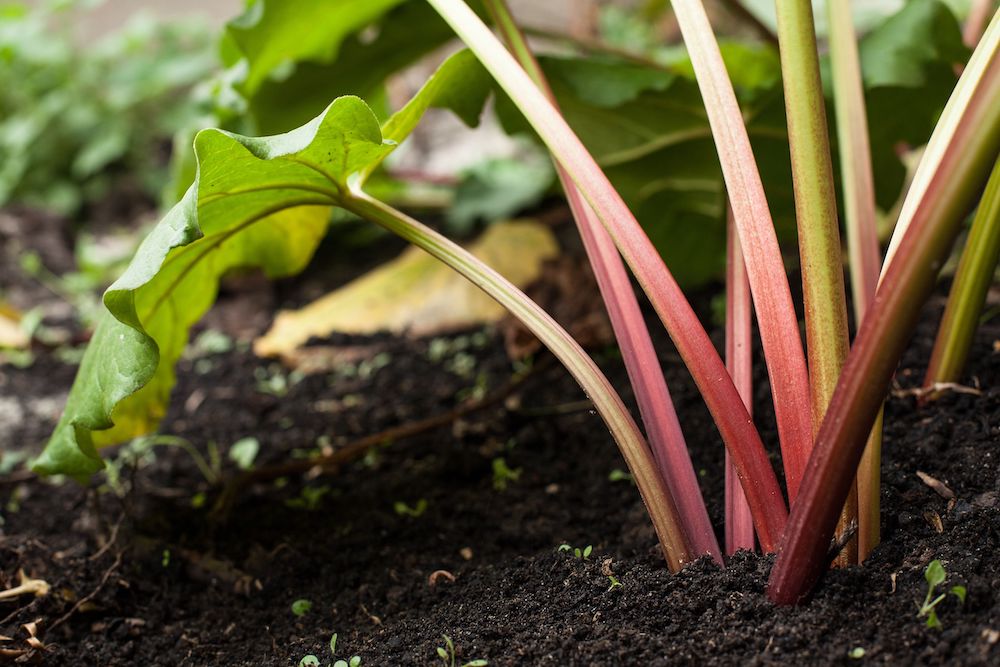
Rhubarb is usually planted in spring when bare-root plants are readily available at garden centers and online retailers. Some garden centers also have rhubarb already potted up in spring, ready for transplanting.
Like the asparagus and sunchoke, plant rhubarb in its own permanent sunny space, such as the edge of veggie bed. Some gardeners appreciate the attractive leaves and stems of rhubarb and grow rhubarb among other perennials.
Rhubarb leaves contain oxalic acid and are not edible raw or cooked. The edible parts are the lovely stems that run from the base of the plant. At the top of the stem is the leaf (technically called a blade), which should be chopped off and discarded.
The recommended ways to harvest rhubarb is to reach into the plant and twist and pull a stem from the base. Some gardeners use a knife to cut the stem from the plant. Harvest spring to early summer. Here’s more from Purdue about growing rhubarb.
Strawberry rhubarb pie
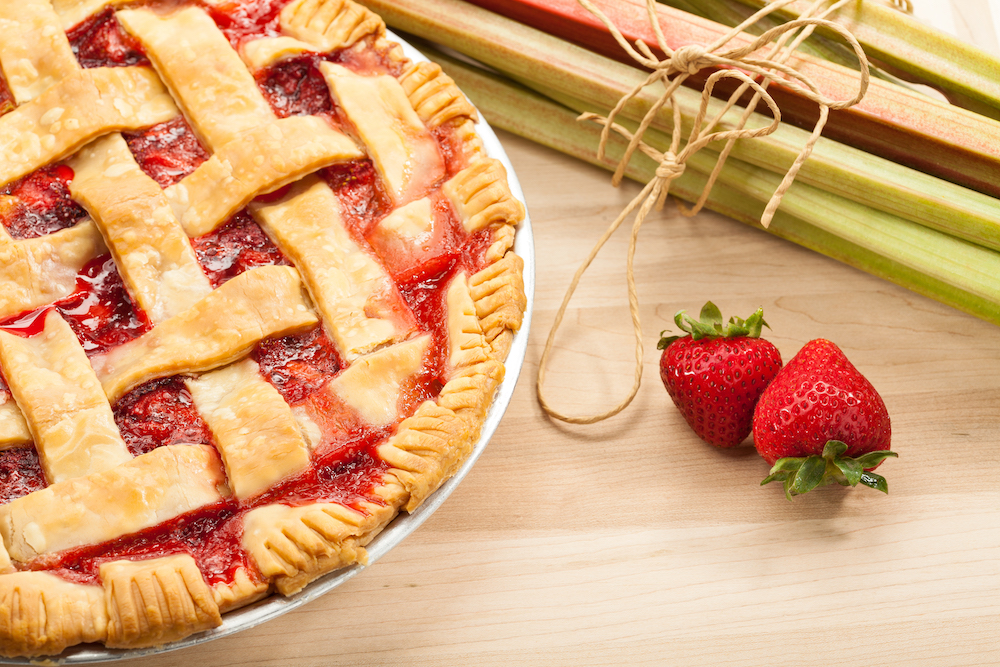
- 2 pie crusts
- 4 cups chopped rhubarb
- 2 cups chopped strawberries
- 3/4 cups granulated sugar, plus more for sprinkling
- 1/4 cups cornstarch
- 1 tablespoon lemon juice, plus 1 teaspoon of zest
- Pinch kosher salt
- 2 tablespoon cold butter, chopped
- 1 large egg, beaten
- Vanilla ice cream, for serving
Preheat oven to 375 degrees F. Using a rolling pin, roll out both pie crusts to about 16 inches across. In a large bowl, mix together rhubarb, strawberries, sugar, cornstarch, lemon juice, zest, and salt until mixture begins to look juicy. Place one crust into a pie dish and pour in fruit mixture. Dot with pieces of butter.
With the other sheet of pie dough, make a lattice top. First, cut the dough into ¾ inch strips. Weave strips over and under each other in a crisscross formation. Using kitchen shears, trim the top and bottom crust so there’s a 1-inch overhang, then fold under and crimp edges together. Brush crust with egg wash and sprinkle with sugar.
Bake until pie is golden and filling is bubbling, about 1 hour to 1 hour, 20 minutes. If crust is browning too fast, cover with aluminum foil.
Let pie cool slightly. Serve with vanilla ice cream, if desired. Adapted from Delish.com